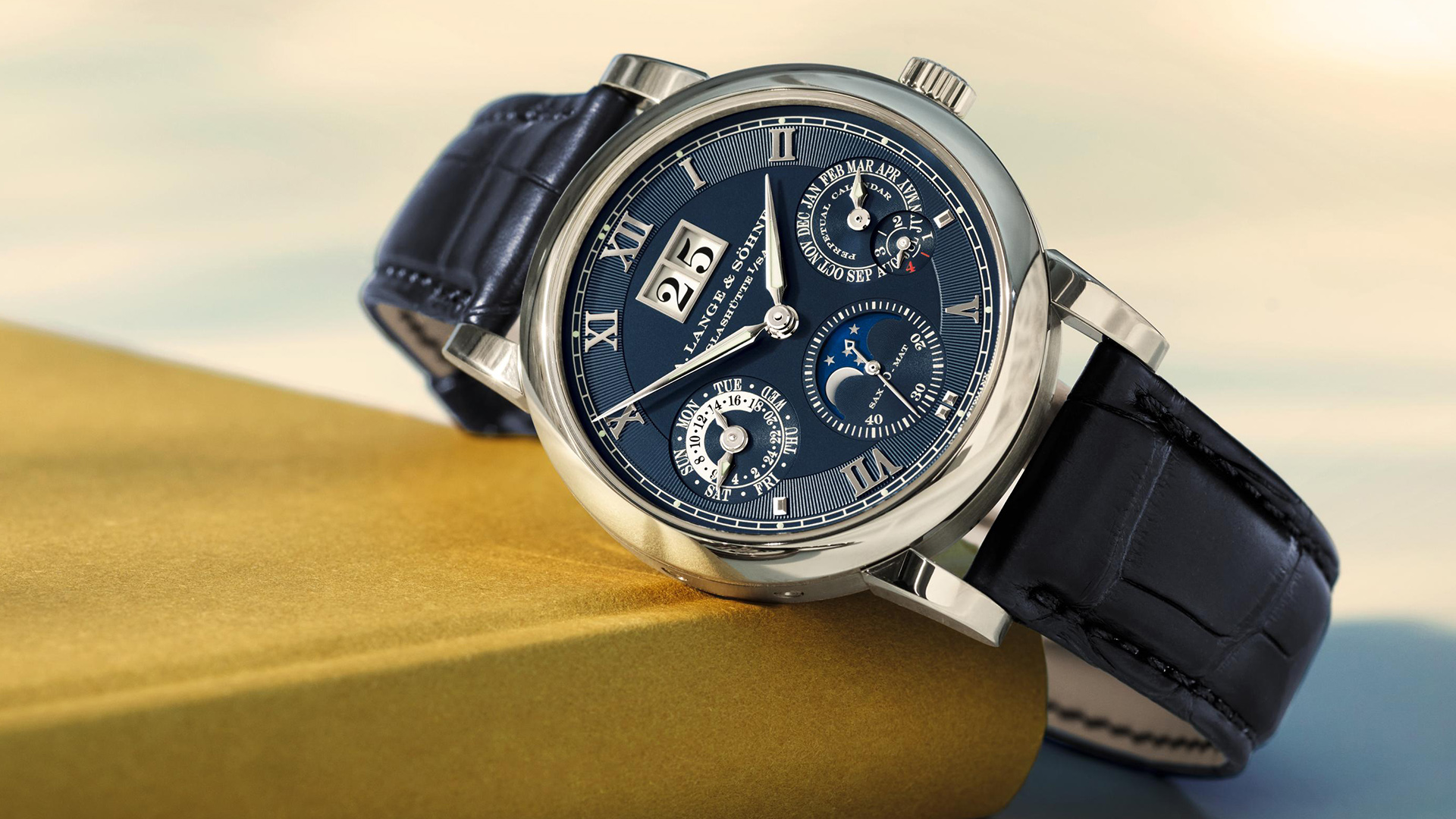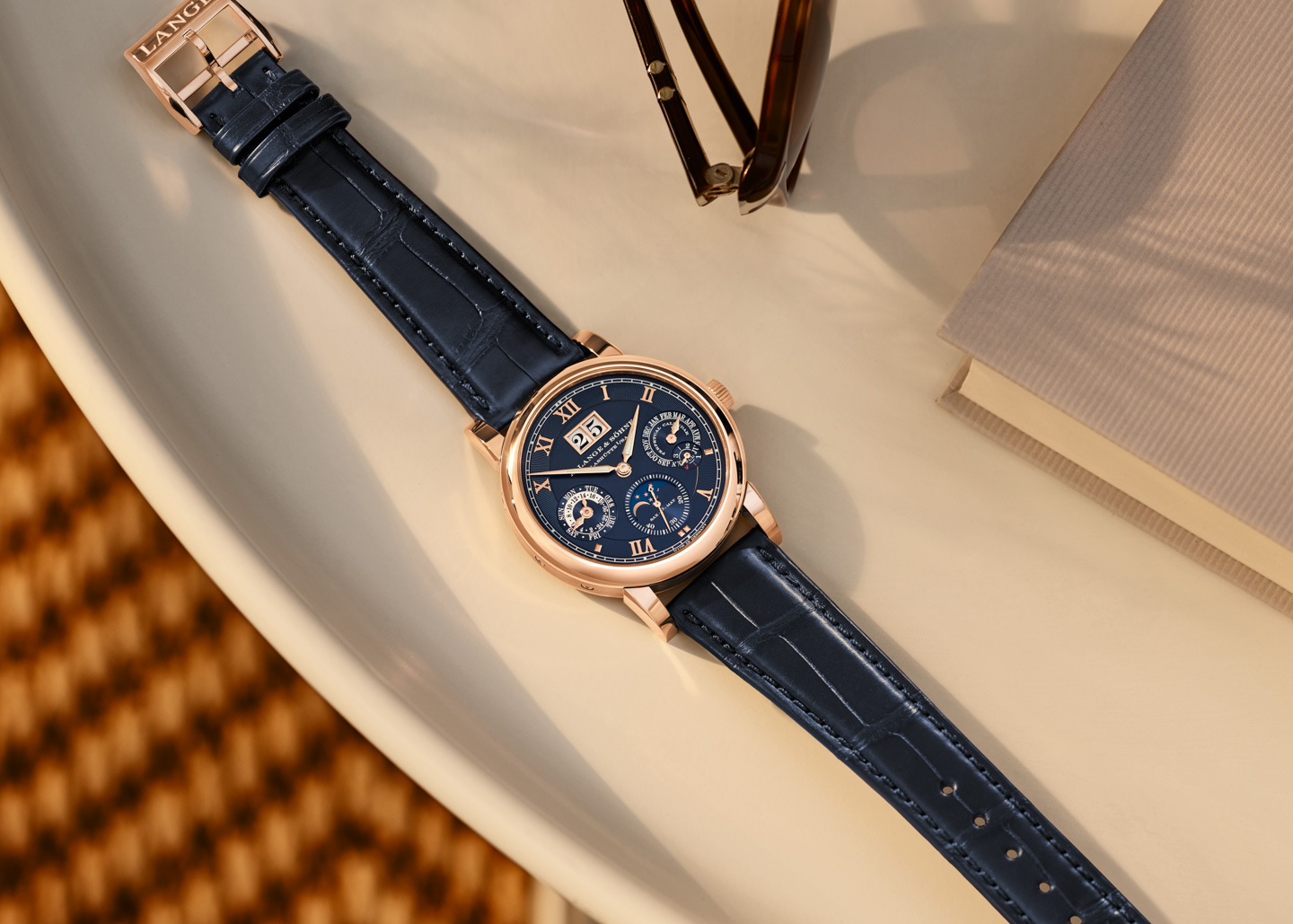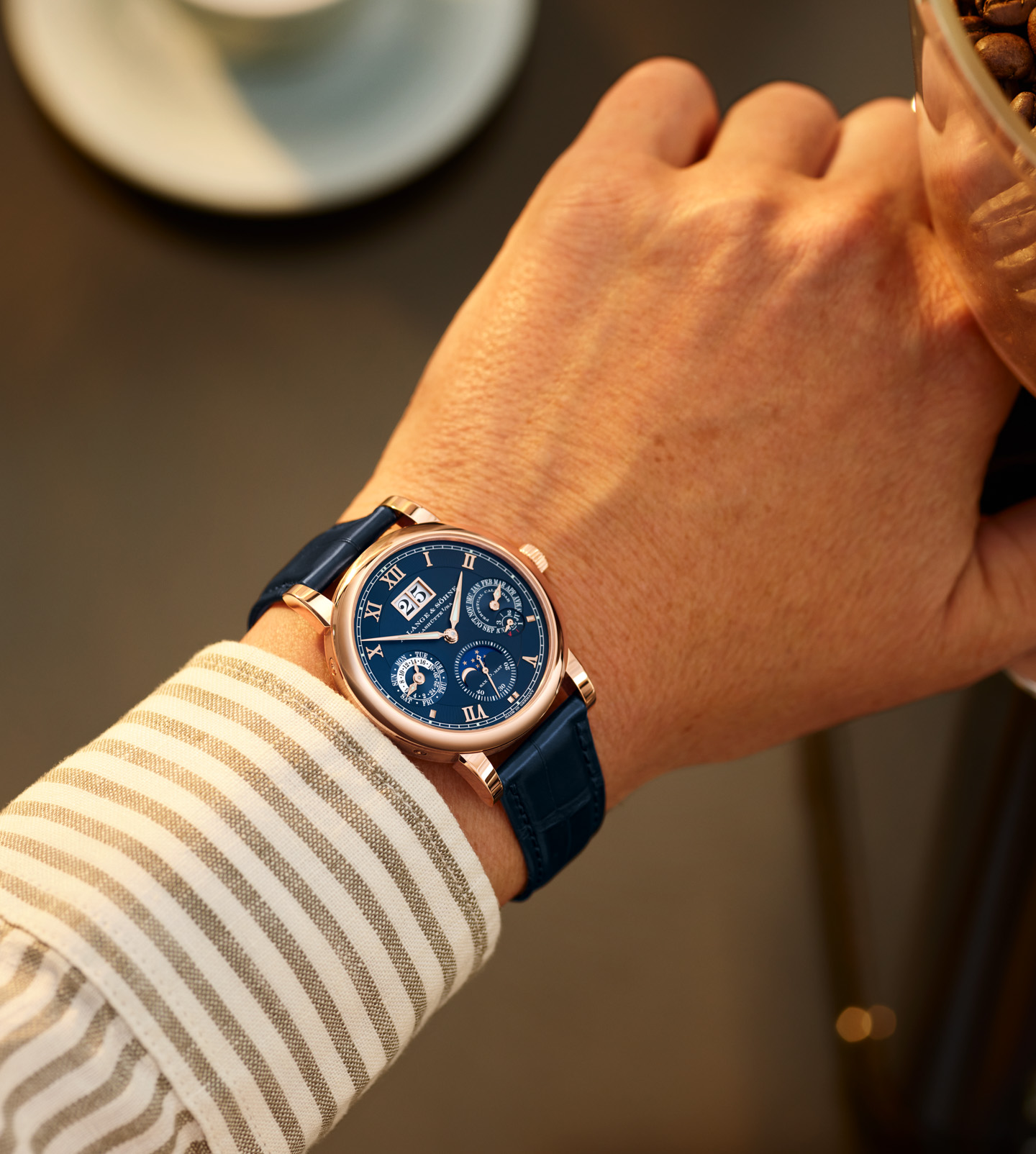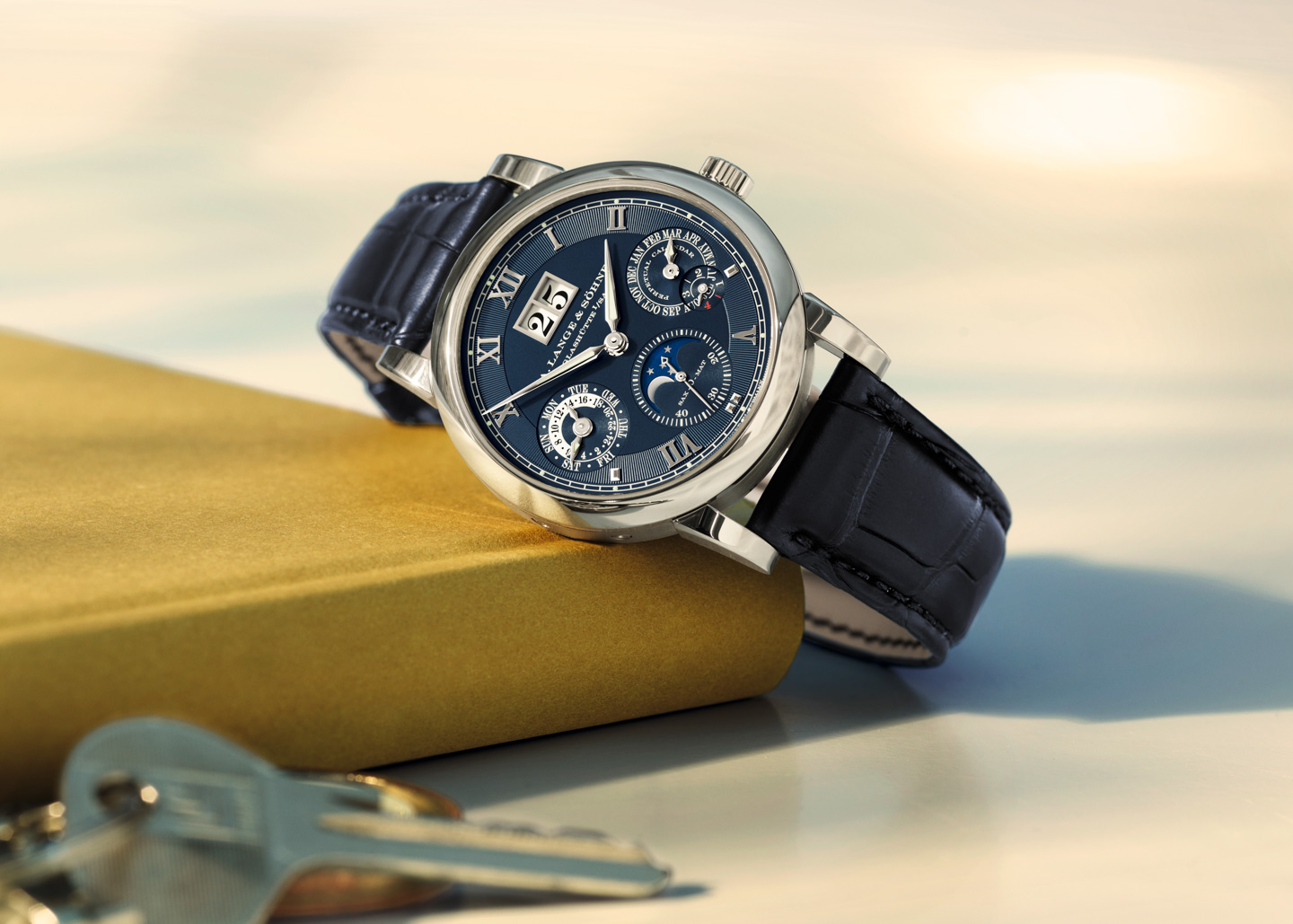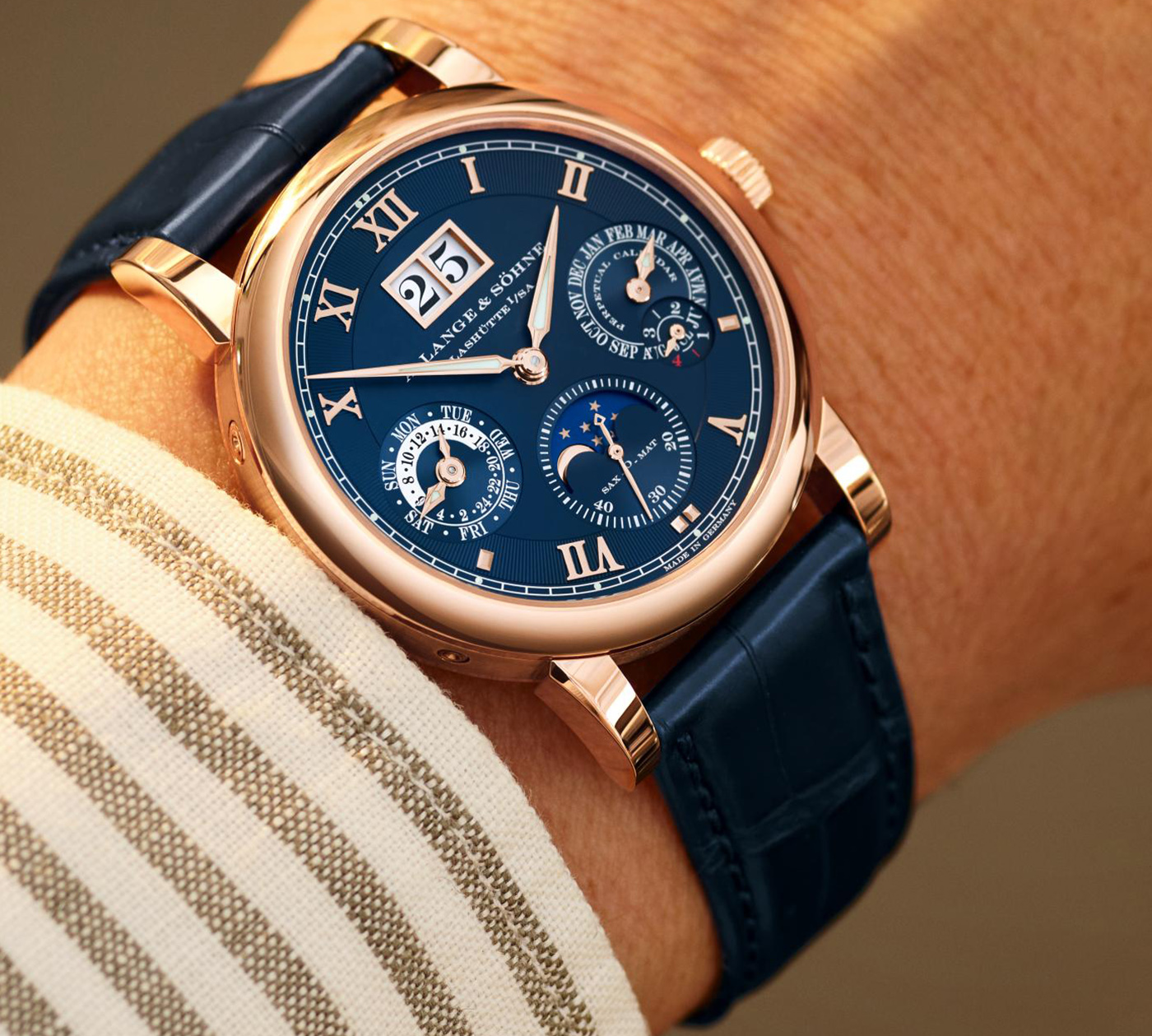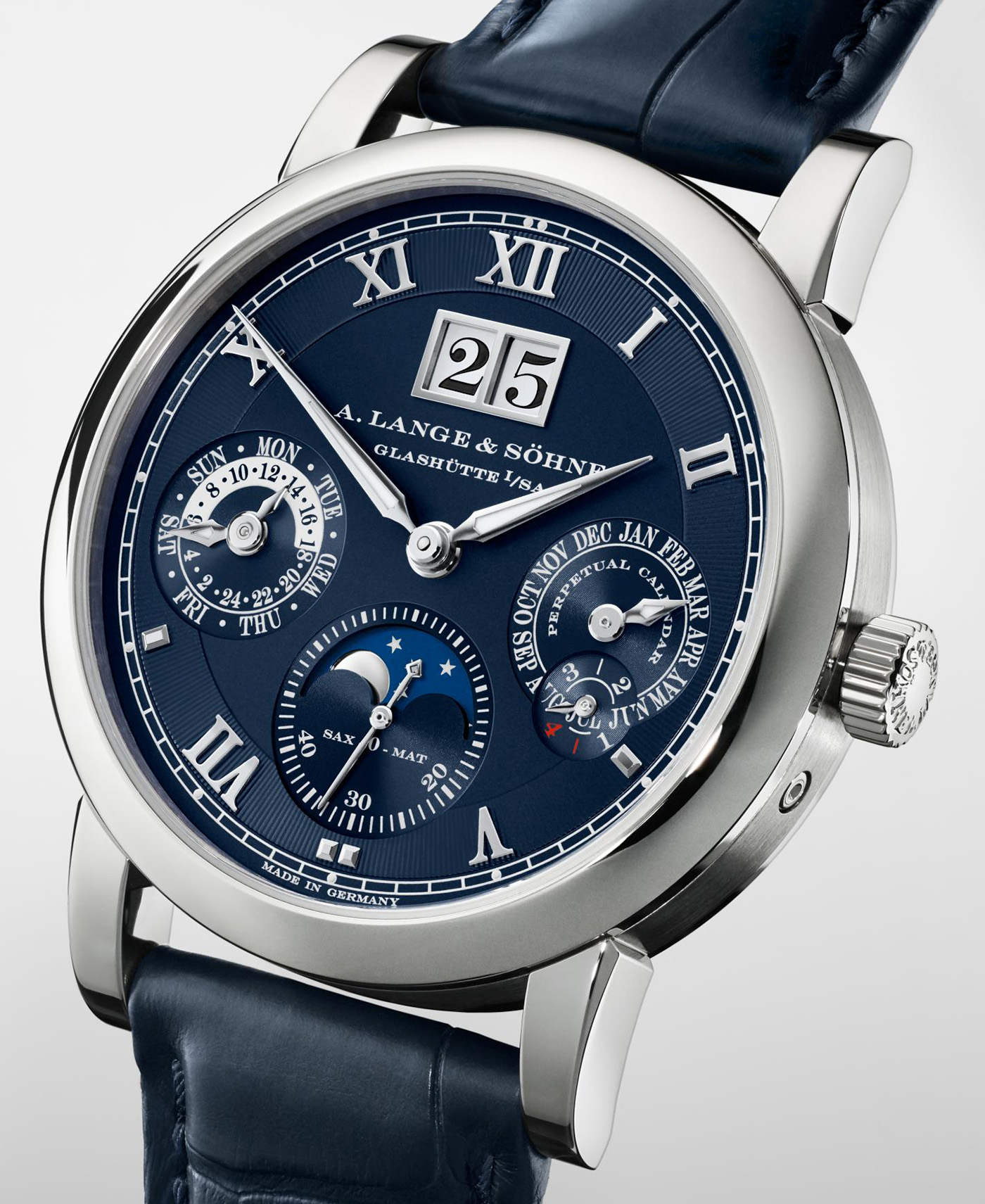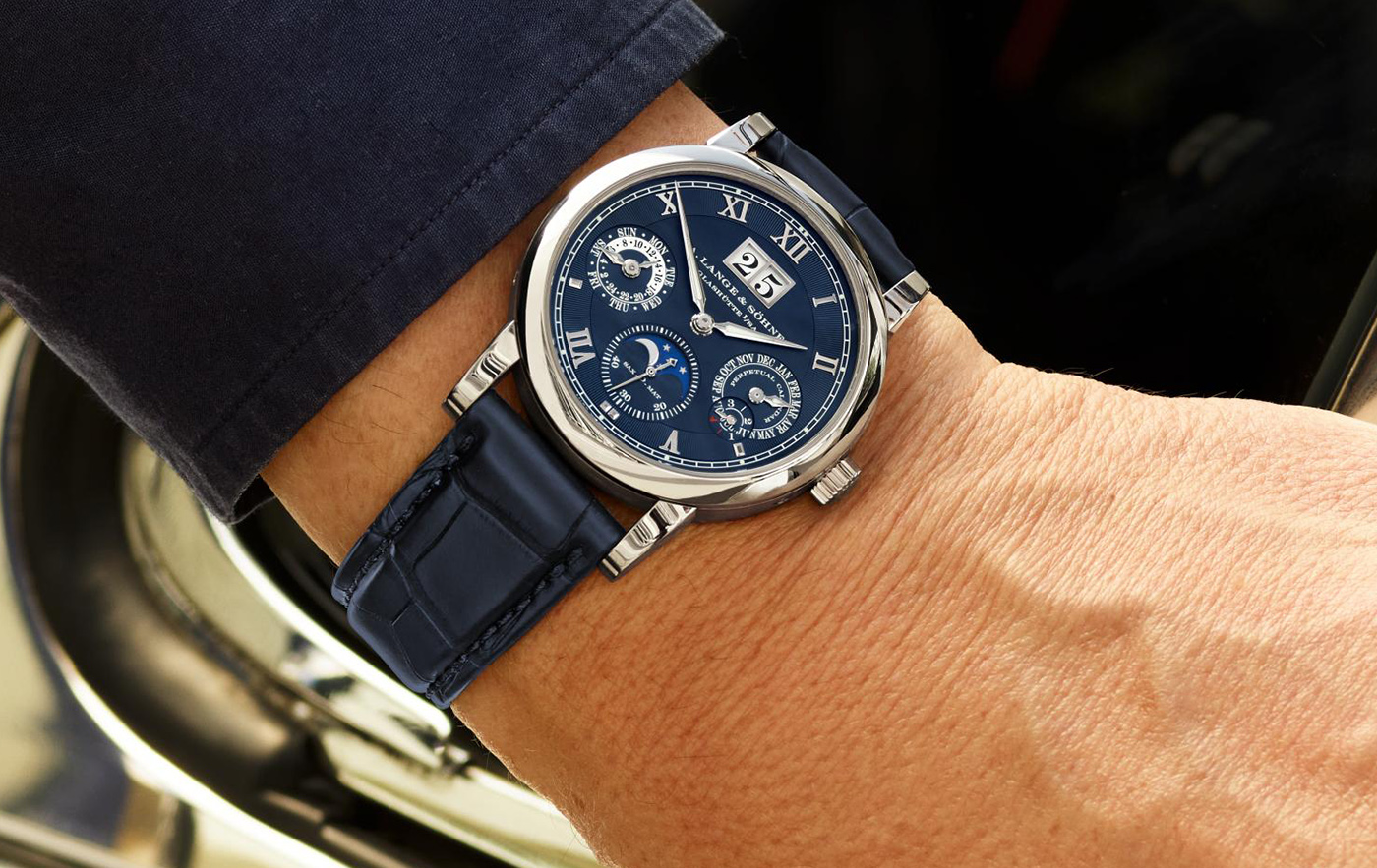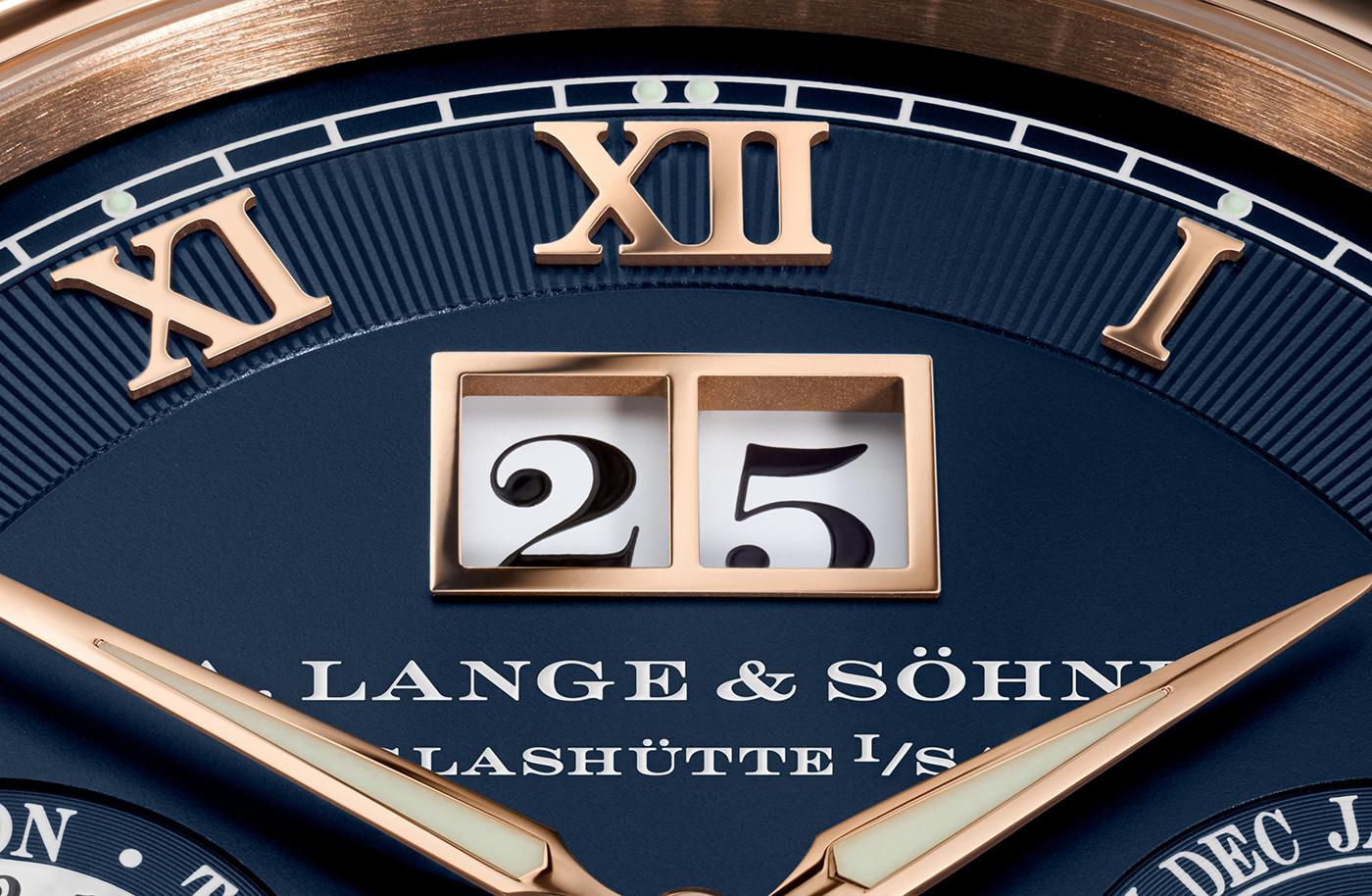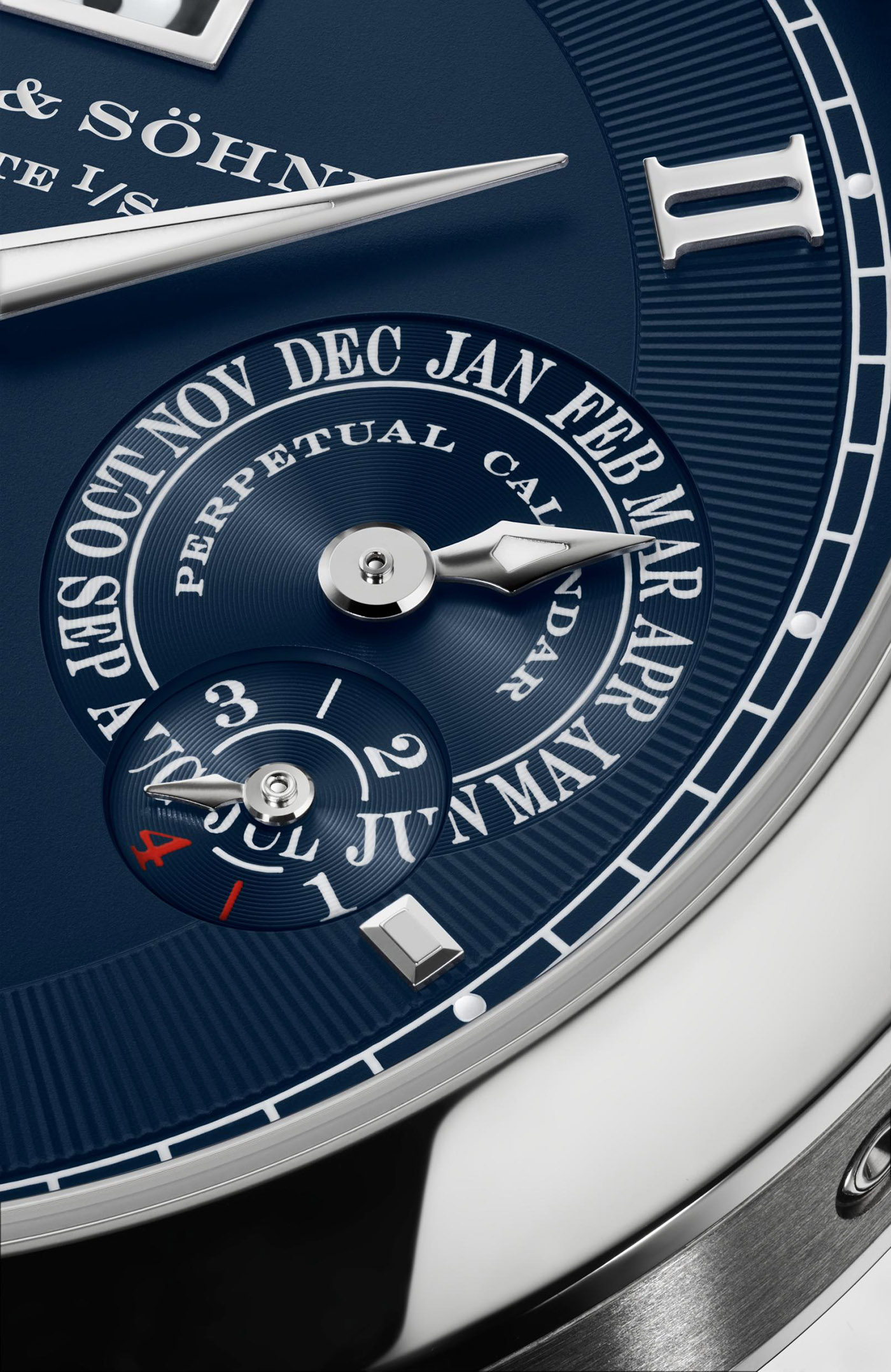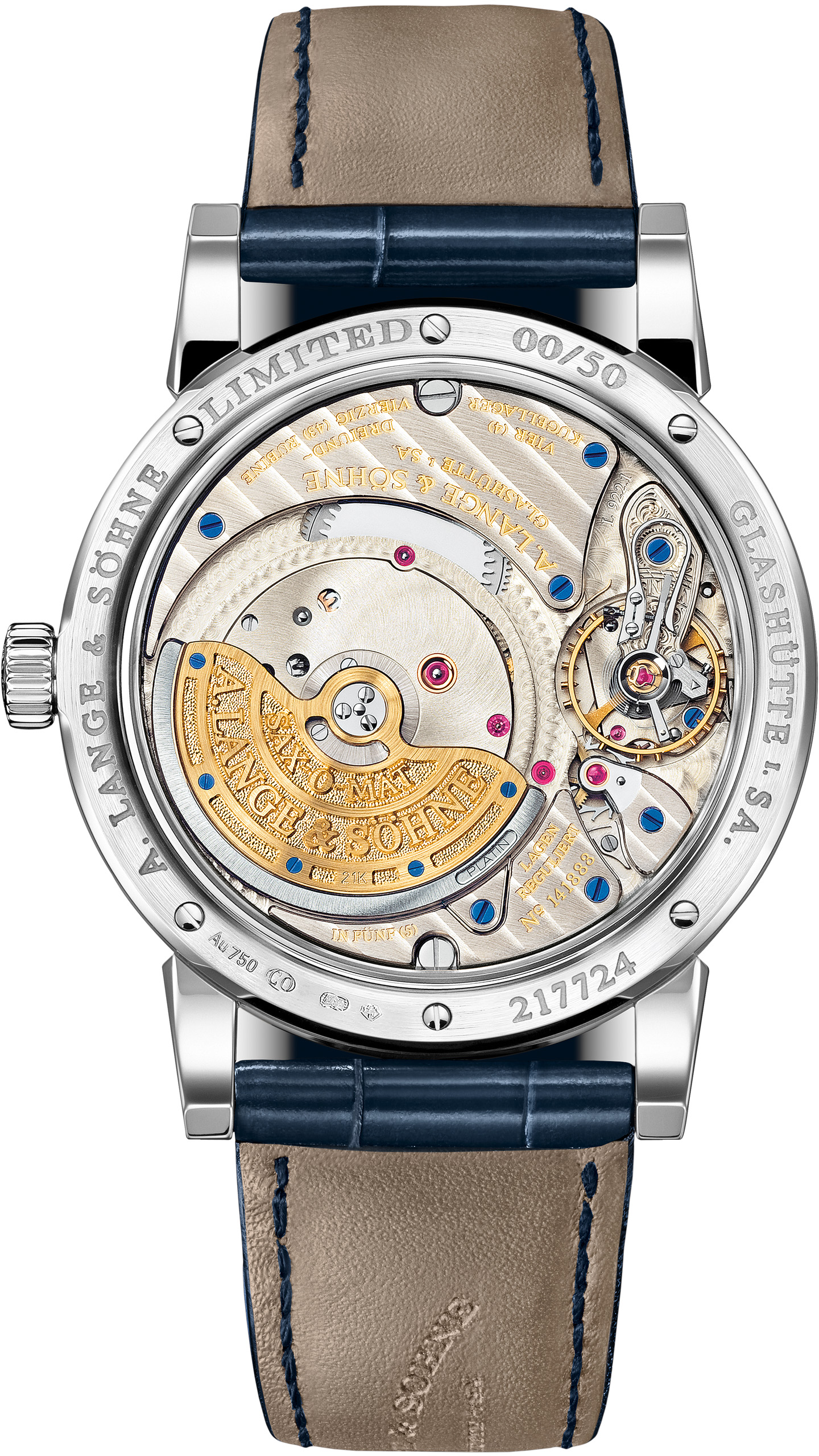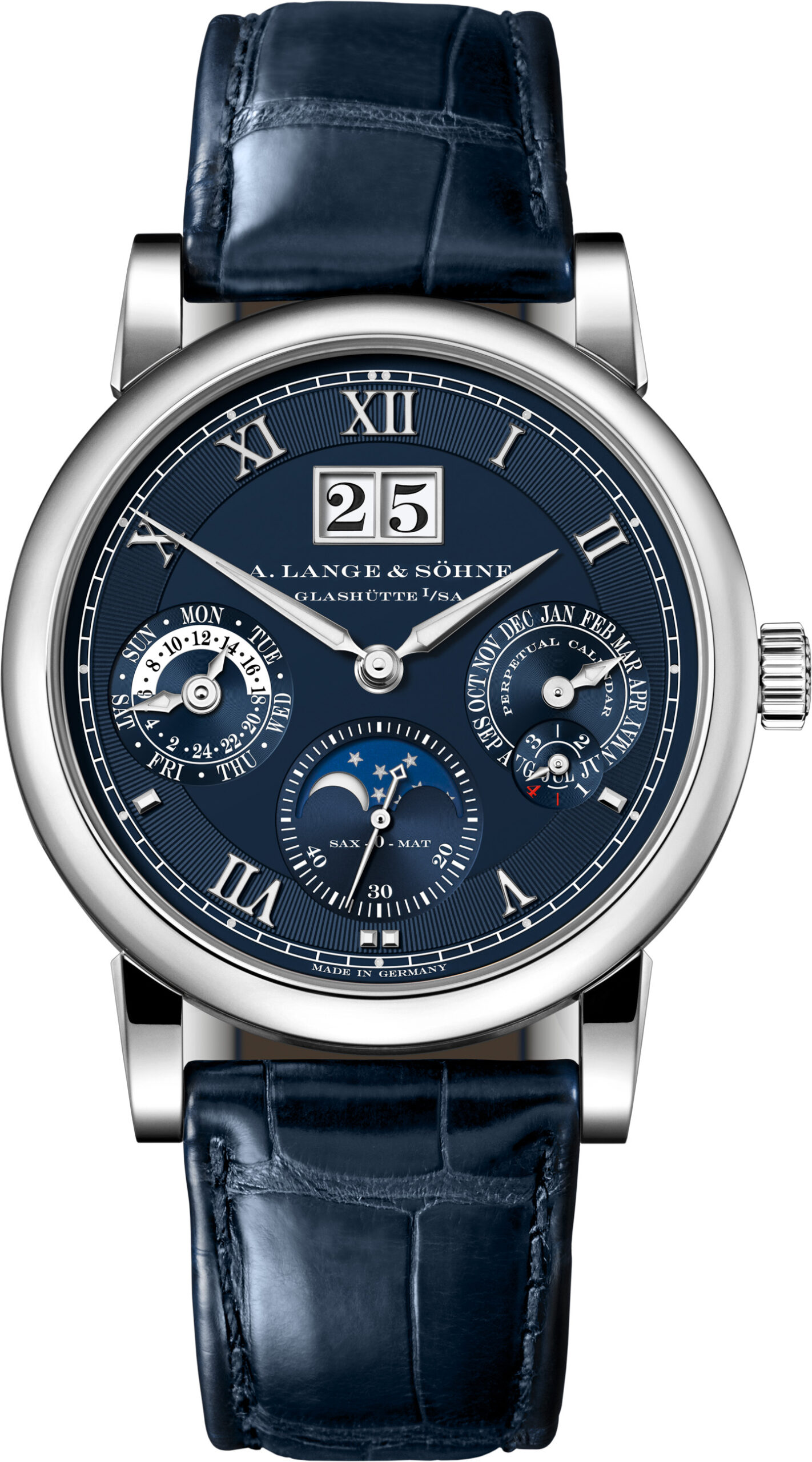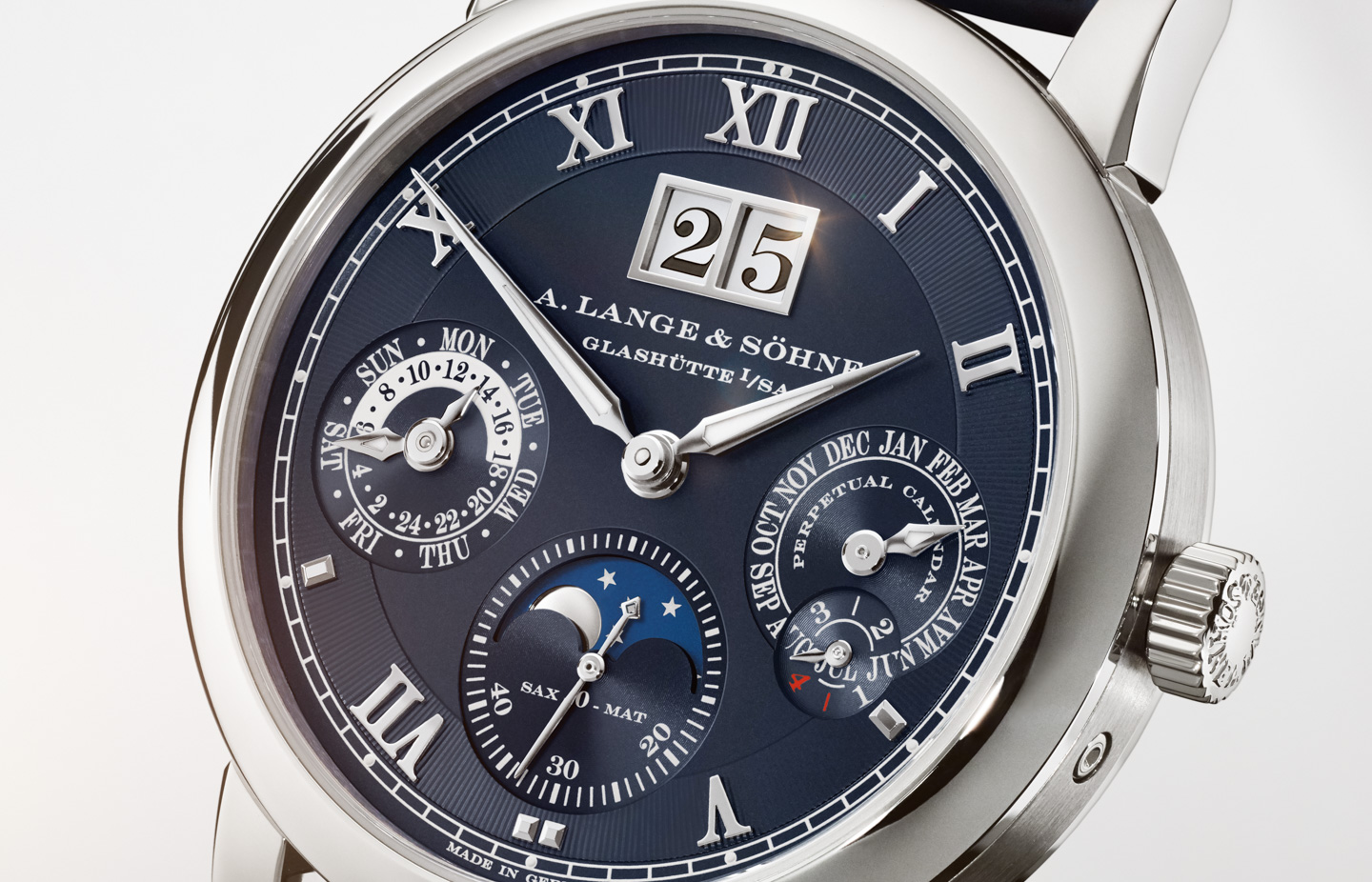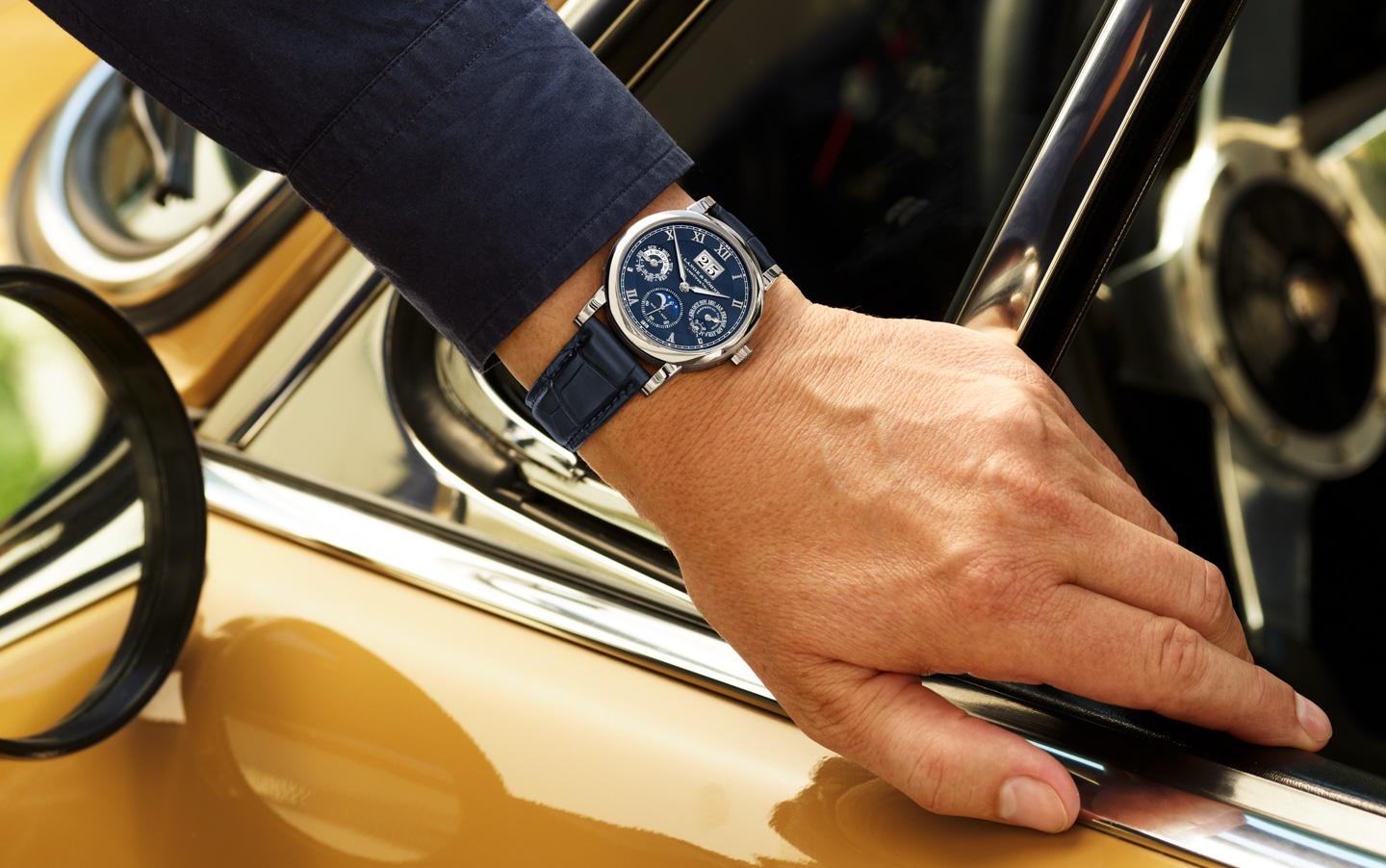
On the occasion of the 20th anniversary of the original A. Lange & Söhne Langematik Perpetual Calendar, Glashutte, Germany-based A. Lange & Söhne is set to release two new limited-edition (of 50 pieces each) versions of the Langematik Perpetual watch with midnight-blue dials — fitted with either an 18k white gold or 18k pink gold case in the references 310.028 and 310.037, respectively.
Many watch lovers dream about wearing a watch with a perpetual calendar mechanism. Such a complication is among the “high-watchmaking” specialties of the luxury timepiece industry, which includes a calendar system capable of taking into consideration leap years. Perpetual calendar watches are hardly new, or uncommon, but they are hardly created equally. Perhaps no other generalized term such as “perpetual calendar” can mean so many things in the scope of wristwatch movement functionality.
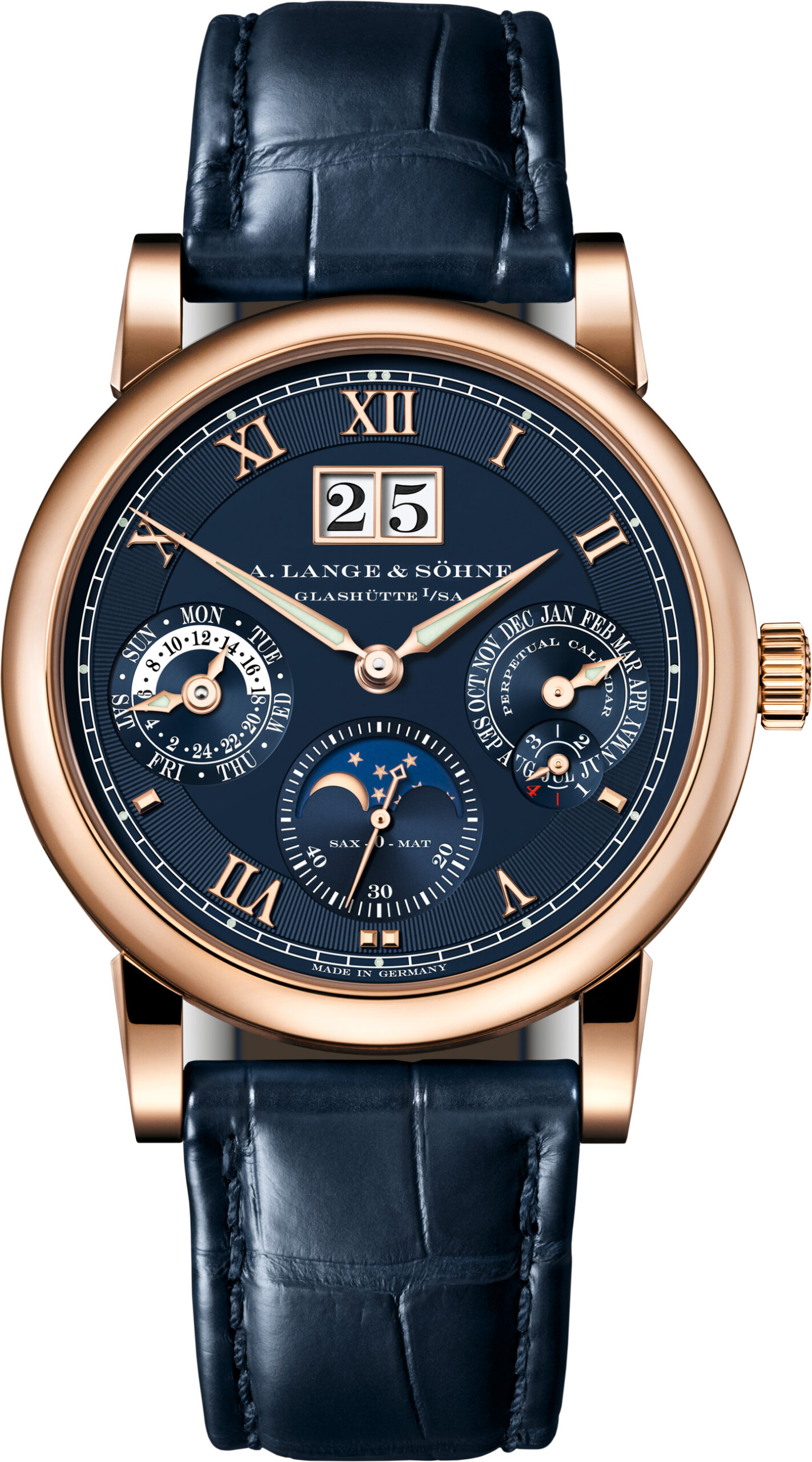
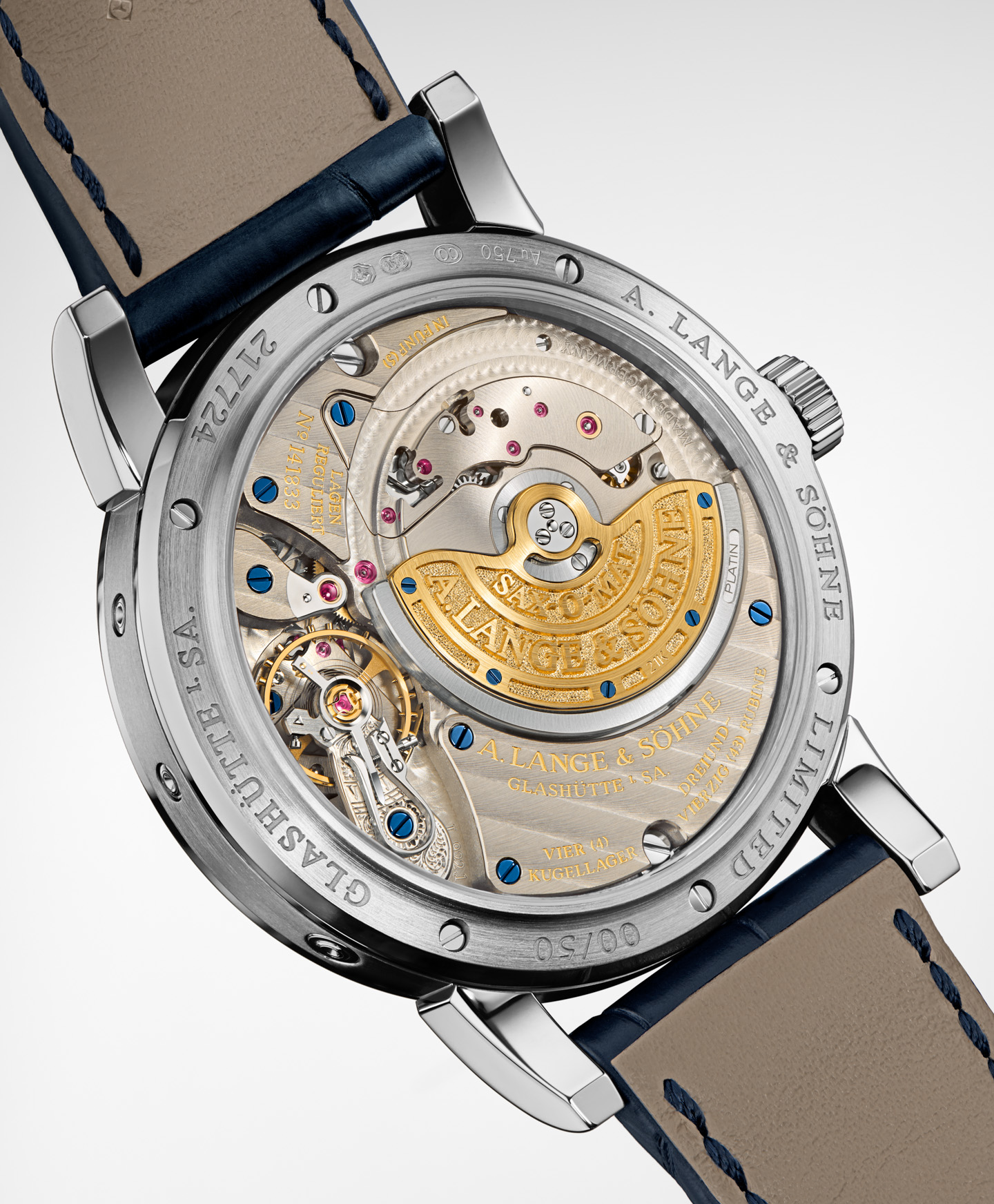
There are two primary watches in which perpetual calendar watches different from each other. The first is in terms of how the calendar information is laid out on the dial. This is both in the ergonomic arrangement of information windows and dials, but also in regard to what complications even exist. For example, a moon phase indicator (which is one of the displays on the Langematik Perpetual) is not strictly necessary on a perpetual calendar display – which means not all perpetual calendar watches have them. Thus, even though many watches have “perpetual calendar” as part of their titles (or the French, quantieme perpetual), their functionality and complications can differ from piece to piece.
Another area in which perpetual calendar watches differ greatly is in their convenience to use and adjust. For a perpetual calendar watch to “perpetually” track calendar information, the watch needs to be in persistent (perpetual) operation. Manually wound mechanical perpetual calendar watches rely on users to recall to wind them. Automatic winding movements (such as the caliber L922.1 SAX-O-MAT in the Langematik Perpetual make keeping the movement wound more likely, given how automatic watches wind as you wear them.
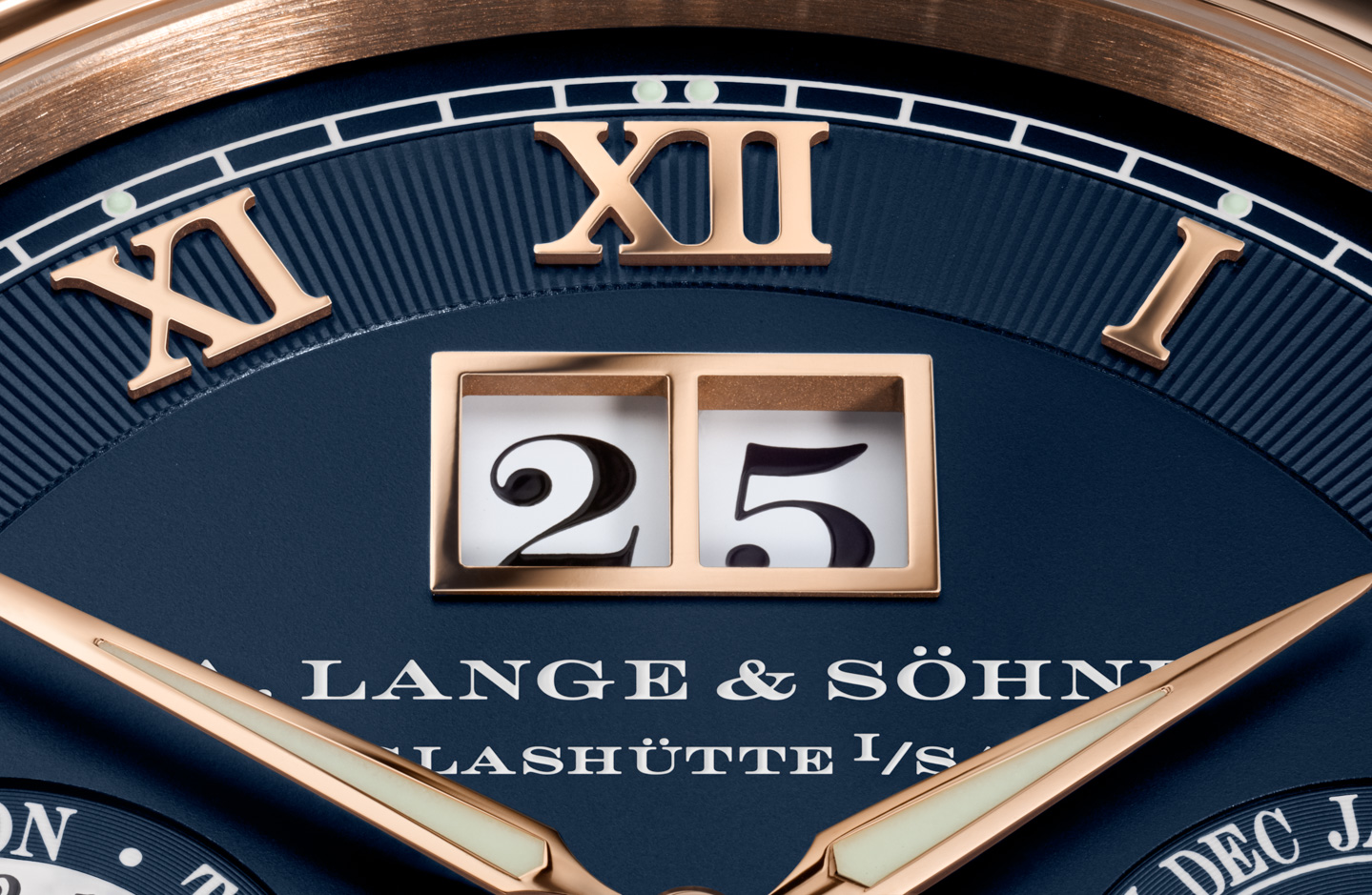
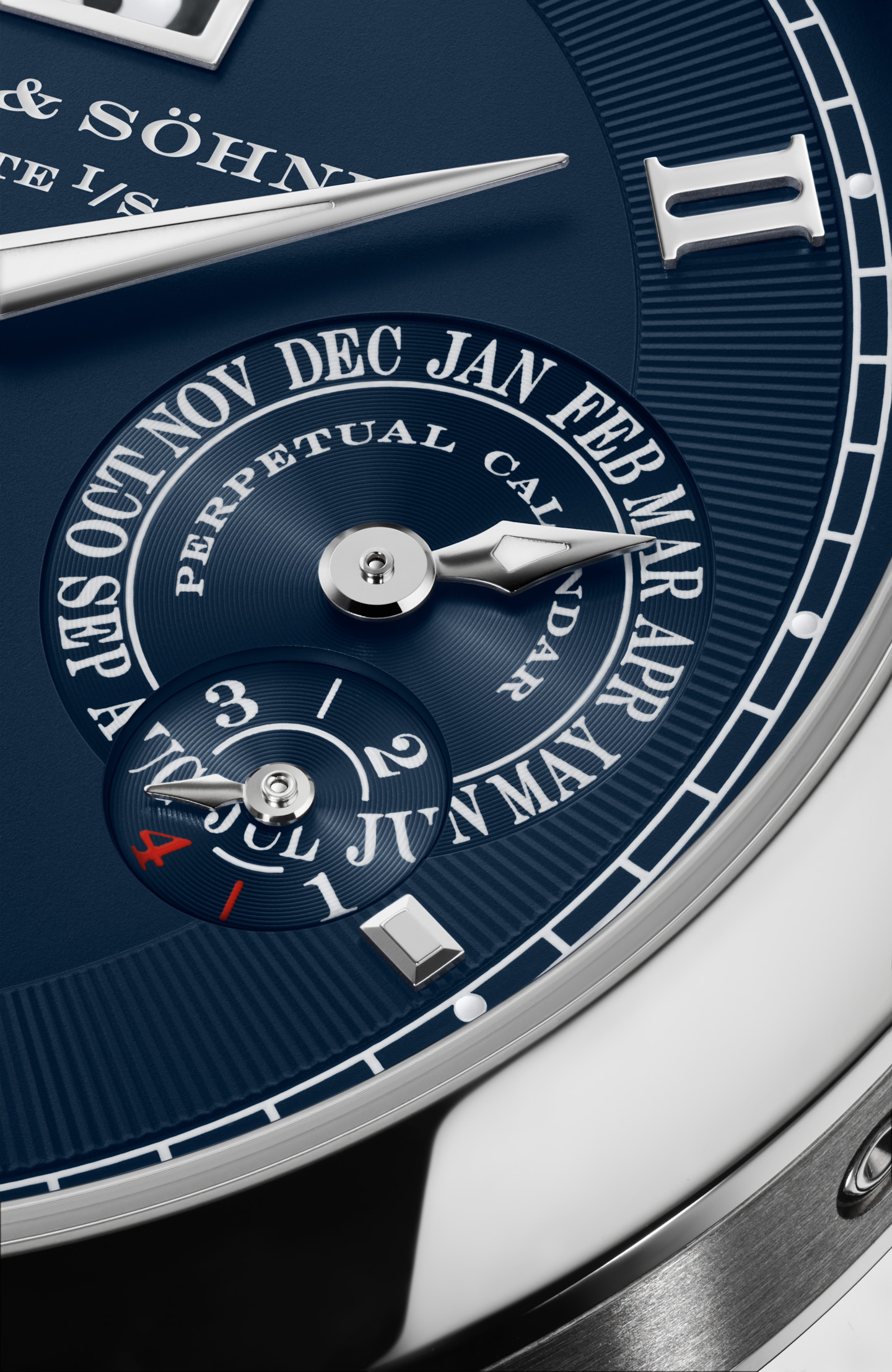
Finally, if your perpetual calendar system is off (such as if the watch stops operating for a few days), perpetual calendar mechanisms are not all easy to readjust — some requiring a lot of fiddling with small in-set case pushers. Companies like A. Lange & Söhne that produce a number of perpetual calendar systems and movements include a special pusher that advances all of the calendar information by one day, simultaneously. Thus, if your Langematik Perpetual watch stops operating for four days, then to readjust the perpetual calendar, all you need to do is press the calendar advance pusher four times.
The caliber L922.1 automatic movement is further designed, produced, decorated, assembled, and tested all in-house at A. Lange & Söhne. It benefits from the company’s reputation for meticulous detailing and care when making sure that each and every movement works as intended. The movement here is comprised of 478 parts and operates at 3Hz (21,600 bph) with about 46 hours of power reserve. Eventually, I’d like to see 4Hz operation Lange movements — but that is a different conversation. The movement is produced from German Silver baseplates and very richly decorated. You can see how the movement has a “3/4” automatic rotor, which is not quite full-sized but is larger (and thus more efficient) than a micro-rotor. The rotor is produced from 21k-gold with an outer centrifugal weight in 950 platinum. The movement has a zero-reset function, which returns the seconds hand to zero when the crown of the watch is pulled out. This allows for a more precise setting of the time.
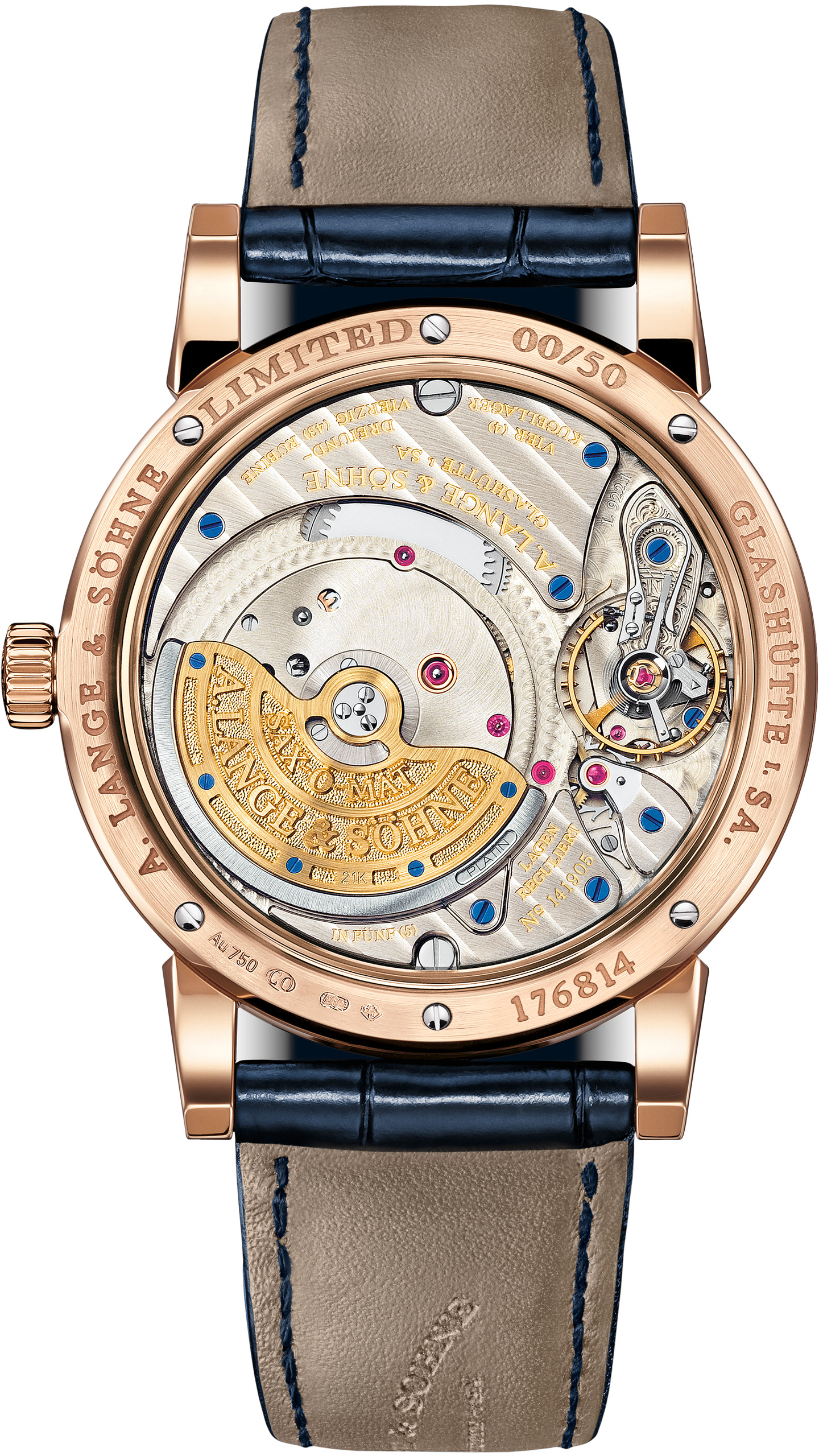
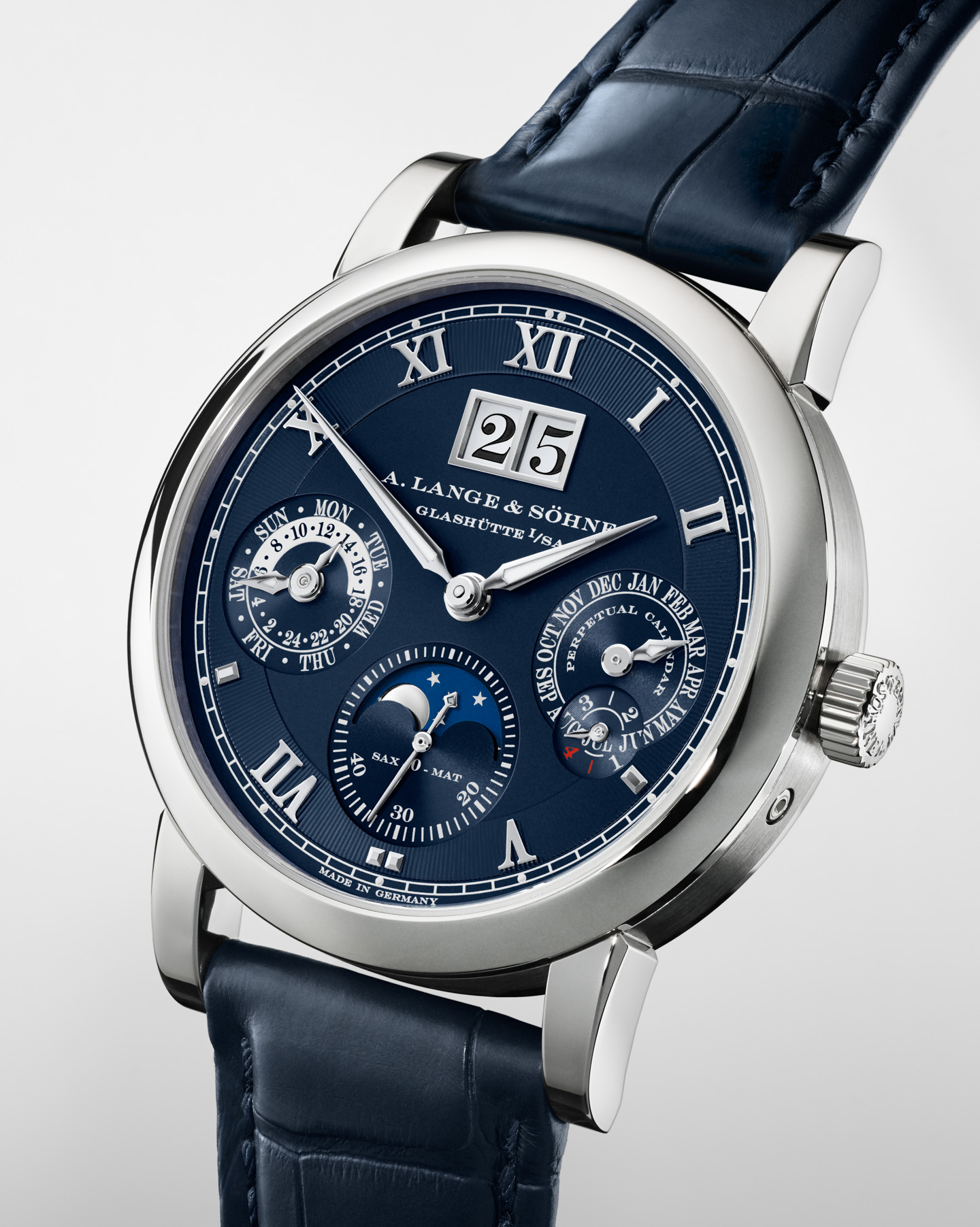
In addition to the time with seconds, the Langematik Perpetual dial has a big date indicator window, moon phase display, and four other hands on the dial that indicate the month, day of the week, AM/PM indicator, and leap-year tracker. The dials feature Roman Numeral hour markers, ideal proportions, and come in a modestly sized 38.5mm-wide case that is just 10.2mm-thick. The movement alone is just 5.7mm-thick.
Few companies do perpetual calendars as nicely and as conveniently as A. Lange & Söhne. The Langematik Perpetual is designed to be both classy and luxurious but also practical for daily wear (if you so choose). The beautifully decorated and well-engineered movement does, however, come with a price. These days, mechanical perpetual calendar watches can be purchased for under $10,000 USD. The ceiling for perpetual calendar watches is, however, much higher. Over the years, the price of the Langematik Perpetual has crept up with a cost (at least for these limited-edition blue models) nearing $100,000. Accordingly, each of the 100 pieces (50 pieces per style) of the A. Lange & SöhneLangematik Perpetual blue references 310.028 and 310.037 is 91,000 Euros. Learn more at the A. Lange & Söhne website here.

